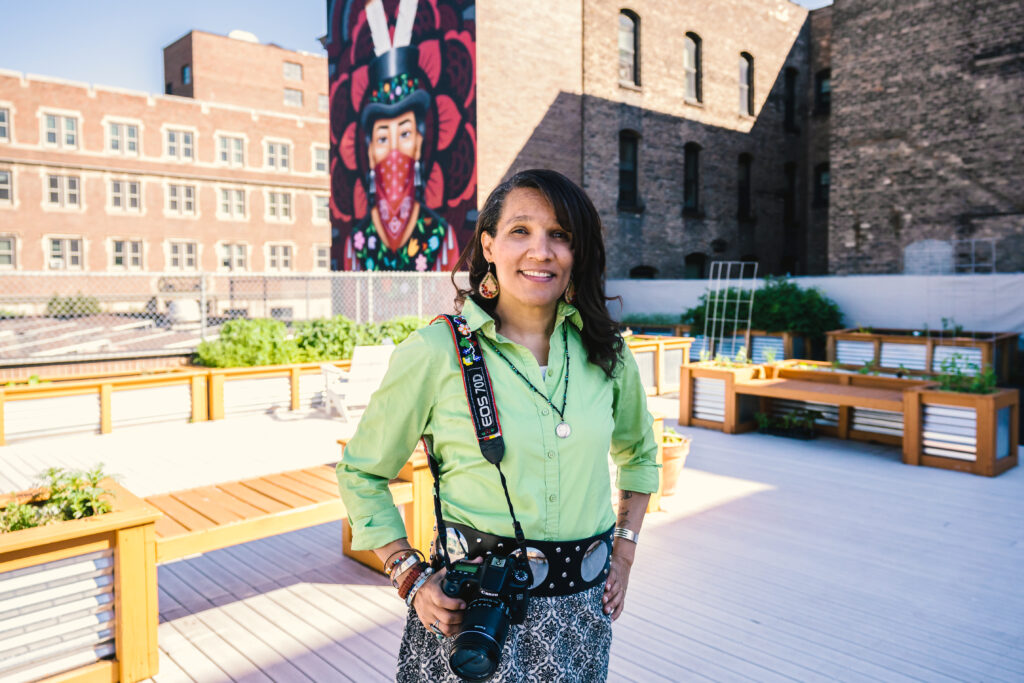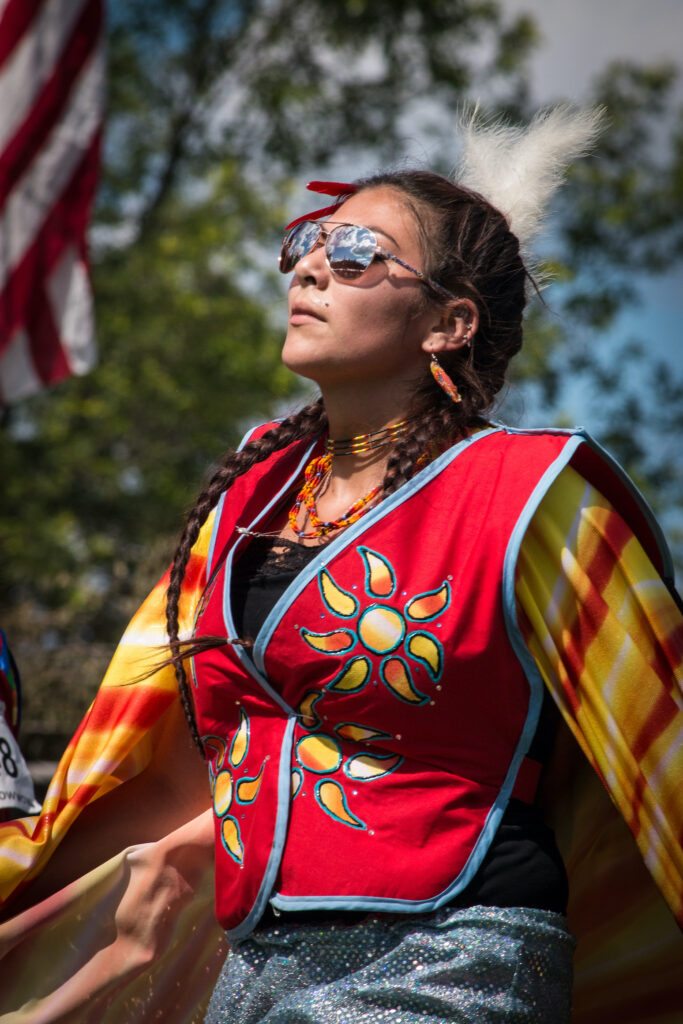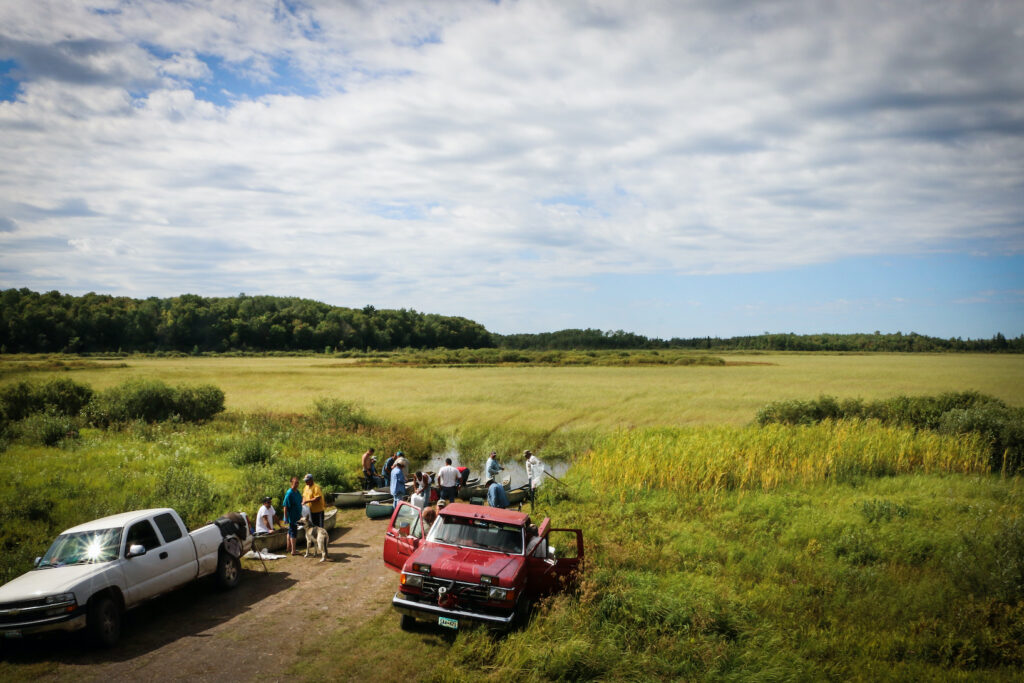
Faces of Duluth tells the stories of the people behind Duluth’s iconic attractions, hidden gems and everything in between. Traveling to Duluth? Learn the locals’ tips and tricks for seeing all the city has to offer.
The shores of Gichigami (Lake Superior) have been home to Indigenous peoples for centuries, with the city of Duluth resting on the historical, traditional, contemporaryland of the Lake Superior Anishinaabe (Ojibwe) people. Today, the Anishinaabe culture is still preserved and celebrated in many ways throughout the city, thanks in part to the work of Ivy Vainio and the team at American Indian Community Housing Organization (AICHO).
Below, Ivy discusses her work, her Duluth favorites, and how visitors can learn more about the area’s BIPOC culture through food, music, art, gifts and more.
What’s your Duluth story?
My parents and I lived on a farm in Bruno, Minnesota, where the population at the time was 62. After high school graduation, I moved to the BIG city of Duluth and went to the University of Minnesota-Duluth (UMD). I graduated in 1992 with a History degree and minor in American Indian Studies. I worked for a few years in my first job at the Center of American Indian & Community Health program at the UMD Medical School. I then ran off to Seattle to be with my fiancé, Arne Vainio, MD. After graduating from his family practice residency in Seattle, we always knew we would move back to Duluth to live, work and raise a family.
What do you love about Duluth?
Duluth has always been a beautiful city, especially with Lake Superior, parks and an incredible music scene! I love blues, folk, rock, funk, R&B and 80’s/90’s country music – and local musicians like Charlie Parr, Jeffery James O’Laughlin, Trampled by Turtles, Teague Alexy (who plays Sir Benedict’s Tavern on the Lake EVERY Monday evening), Afrogeode and the Gemstones, JayGee, The Brothers Burn Mountain and so many others – too many to name. Duluth’s Homegrown Music Festival and the Glensheen Mansion’s “Concerts on the Pier” are my favorite outings.
Tell us about your work with AICHO. What is AICHO? And what is your role?
AICHO is an Indigenous-led nonprofit that centers its commUNITY work in housing, domestic violence shelter, cultural arts, Indigenous food sovereignty, economic development, Indigenous retail business and more. I had been volunteering with the organization since 2012. My role with AICHO right now is Cultural Arts Coordinator, Cultural Program Coordinator and Communications Specialist. I work with and advocate for over 80 artists, host art gallery shows, coordinate Anishinaabe cultural and spiritual centered sessions for the community, work with Indigenous and BIPOC food producers/harvesters while providing opportunities for economic growth and learning. I also promote AICHO’s events, programs and initiatives to the media and community via social media outlets, media advisories and billboard campaigns.
AICHO hosts many events throughout the year – can you tell us more about the events happening this summer/fall that visitors should check out?
Every other Saturday this July, August and September, we will be hosting our 2nd Annual AICHO Indigenous Food and Art Markets, featuring more than 25 local Indigenous, Black and POC (People of Color) food and art entrepreneurs selling their products and items. This expands the opportunities for our Duluth community to engage and support these food producers and artists, and also participate in hands-on food sovereignty and cultural arts learning. Plus, this year we will have ready-to-eat food with Howard’s Que!
We also recently had an artist opening reception in our AICHO Galleries for “Indigenous,” by Turtle Mountain Band of Ojibwe tribal member and artist Shaun Chosa, which has 30 large sized paintings that feature Indigenous portraits. The gallery viewing hours are every Friday from 4 – 6 p.m. This show will be open until September 16 and is free and open to the community. (More information can be found here.)

Tell us about AICHO’s Indigenous First: Art & Gift Shop – where is it, and what can people find there?
Indigenous First is the only gift shop in this whole city where you can purchase locally, regionally and nationally made products from Indigenous and BIPOC artists and food producers. Every time someone walks into the gift shop, they stop and are almost slack-jawed. We sell original fine art, art giclee prints, locally harvested wild rice, maple syrup, hominy and other Indigenous packaged food products, birch bark baskets, Anishinaabe applique designed clothing, books written by American Indian authors, beadwork, merchandise and so much more! The gift shop staff works with close to 100 local and regional Indigenous/BIPOC artists and food entrepreneurs.
It is located in the AICHO Headquarters building at 202 W. 2nd Street in downtown Duluth. The store is open weekdays from 10 a.m. – 5 p.m. We are also online at www.indigenousfirst.org.
What are some recommendations you have for visitors who want to learn more about the area’s Indigenous culture and history?
There are so many ways to learn more about Indigenous culture and history, for all ages and interests. Onigaaminsing, Duluth, is on shared Anishinaabe historical, traditional, contemporary lands. To learn more, I’d encourage people to attend a local powwow. Fond du Lac Ojibwe Reservation will host their annual Veteran’s Powwow July 8-10 and the Sobriety Powwow on August 5-7 in Sawyer, Minnesota, just 25 minutes south of Duluth. All people from all backgrounds are welcome.
Another option to learn more is to attend one of AICHO’s events and watch the cultural information session videos on our YouTube Channel. Or, stop by Gichi Ode’ Akiing Park and view the murals that reference Ojibwe culture and traditions, peruse the Ojibwe Art Gallery in The Depot, take an online class or visit the American Indian/First Nations Departments at local universities, attend Duluth’s Indigenous Commission meetings or events.
Take the time to learn where real wild rice comes from and why it’s important to Anishinaabe people. Traditionally harvested wild rice, beadwork and artwork styles/techniques are passed down through the generations. These are peoples’ livelihoods. Support local Indigenous food producers and artists instead of purchasing items and art that are “Native Inspired” but not Native made.

You’re also a photographer. Where can people check out your photography?
I have been a professional photographer for just over a decade and had my first solo photography exhibition in the AICHO Gallery in 2012. You can find my work at Indigenous First, the Ojibwe Art Gallery at The Depot, UMD Multicultural Center and College of Liberal Arts Department, and I also have a photograph in a permanent collection at The Tweed Museum of Art. People can find me on Facebook and Instagram, where I post a large portion of my photography work.
Where do you get your inspiration?
I get my inspiration from my Anishinaabeg and Black ancestors, family and community. I love to see Indigenous and BIPOC community members and families thrive and succeed. It shows generational resilience! Also, from people sharing their gifts and talents. All of this inspires me to work and advocate harder and stronger for and within my community. With photography, inspiration comes from traditions, culture, family interactions, and from pollinators flying from flower to flower and the intricate timing involved in capturing that.
